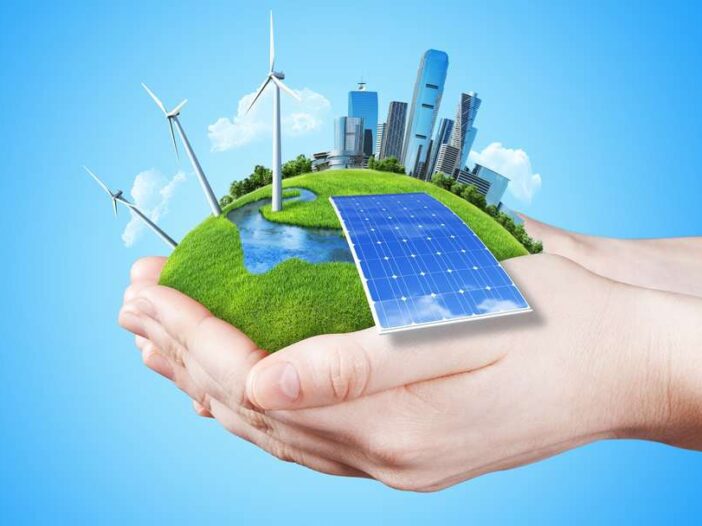Monday’s commute featured an epiphany. I suppose that’s what happens after two weeks’ paternity leave.
After getting on the train here in London, I spotted a lady wearing bright green glasses.
I’m not talking about the frame. I’m talking about the lenses. Literally everything she sees must be green.
It was especially noticeable because she was the sort of person who both needs to get a seat and needs to be the first person to get off the train at the station too. A bad combination in overcrowded carriages. Especially if you’re seeing green to begin with.
Wall Street Insider Shares His Wealth Preservation Tactics. Click here to learn more
The result was a very grumpy set of commuters getting elbowed in the hip and head-butted in the elbow as everyone had to make way, before following her onto the platform anyway.
No doubt you’ve caught on to the metaphor. The world is increasingly seeing everything through the lens of environmentalism. Green-tinted glasses. And the consequences are a painful nuisance as we all have to adjust our lives for the new way of seeing things.
In Sydney, two dams are at 100% capacity and overflowing. But water restrictions continue because of the drought…
Putting on display the opacity of the green-tinted glasses is this from 2GB, with emphasis added:
‘Sydney water restrictions will not be upgraded after a weekend of intense rain and flash flooding across the state.’
It takes flash flooding just to prevent droughts from getting worse these days…
The surprising news is that the green energy furore seems to be working…in a sense. 2019’s global emissions from energy production specifically did not grow from 2018 levels according to the International Energy Agency (IEA).
Despite scientific studies predicting an increase…but let’s not go there.
While emissions in growing economies boomed thanks to coal (I wonder if the two are related…), total emissions from advanced economies’ power sectors fell to levels ‘last seen in the late 1980s’, the IEA estimated.
Not bad. But not as good as the 70s, when oil shortages spiked oil prices and brought emissions down even further. Those were the good old days for emissions, when we worried about cooling instead of warming, in more ways than one.
Enter the caveats to the recent energy emissions data…
Who exactly do we have to thank for this extraordinary progress in fighting climate change? Greta Thunberg’s decision to take a sailboat to Chile and back? The Davos crowd’s decision-making skills? Central bankers’ newfound focus on climate change?
The Financial Times explains who gets the credit:
‘The US saw the largest single decline in emissions of any country, unleashed by the cheap natural gas prices offered by the domestic shale boom. This led to a rapid switch away from coal in the power sector, helping lower emissions by 140m tonnes or almost 3 per cent.
‘The shift has come despite the Trump administration’s withdrawal from the Paris deal and its strong support for the coal industry.’
Yes, President Trump and shale gas are saving the planet. Although, over in the EU, it’s the Russians doing their bit. Gas produced more power in the EU than coal for the first time, also cutting emissions there.
Now I’m not sure what climate change warriors think about gas being their saviour. As far as I know, it’s the one form of power they never seem to mention at all. Then there’s that other one which we’re not allowed to talk about in Australia…
In Japan, it was the decision to turn nuclear reactors back on that helped cut emissions slightly. Although The New York Times claims:
‘Japan now plans to build as many as 22 new coal-burning power plants — one of the dirtiest sources of electricity — at 17 different sites in the next five years.’
And:
‘Together the 22 power plants would emit almost as much carbon dioxide annually as all the passenger cars sold each year in the United States.’
Coal isn’t finished yet! The only question is who will be mining and selling it.
Gas, Emissions and Green Energy
But back to gas and saving the planet. Many years ago, the shale boom in the US and Australia was one of our favourite topics. And it’s certainly been a great boom. But none of us expected this week’s news from the IEA. The idea that gas would be the driver of emissions reduction is a complete surprise to me.
But the gas boom isn’t finished yet either. The EU doesn’t want to be reliant on Mr Putin for its climate change credentials, so it’s backing 32 gas projects with €29 billion — about 50% of their cost. Yes, even the politicians back gas.
How was the EU plan passed amidst howls from campaigners accusing the EU of hypocrisy for financing fossil fuels? I’ll leave it to the Guardian to give you a snapshot of the internal functions of the EU, where unelected commissioners propose legislation that Members of the European Parliament can only ‘take it or leave it’:
‘The European energy commissioner, Kadri Simson, from Estonia, had asked the parliament to back the proposal on the grounds that three-quarters of the 151 projects were electricity- rather than gas-based.
‘The parliament had the option of accepting the entire list, the fourth proposed by the commission under its “connecting Europe” programme, or voting it down in its entirety.
‘Simson said: “An objection to the 4th PCI [Projects of Common Interest] list would mean that the 3rd PCI list remains in force — a list with 40% more gas projects than the new list.”’
I love European politics. As long as they don’t propose anything better, the unelected bureaucrats can get whatever they want passed into law. It’s a unique form of faux democracy.
But what about Australia? Well, we’re a major gas exporter. Usually we collect the criticism for this. Gas does emit, after all. But it looks like gas is contributing to lower emissions, not higher.
The point being, if gas replaces coal, then it’s a reduction in emissions thanks to our exports…
That’s not how climate change campaigners see things though.
Gas has other benefits. It’s supposedly easier to get a gas power plant going than even coal. When a cloud brought down Alice Spring’s power, it was the back-up gas station that failed to ignite. But they chose gas to be there for a reason.
Conveniently, gas is Australia’s third largest energy resource. The first is coal. The second uranium. Turning away from the top three is self-flagellation taken a little too far if you ask me…
For now, nobody is pointing out that the correlation and causation arguments may be a little muddled in all this. Perhaps developing economies are booming thanks to their decision to invest in cheap reliable power while stagnating economies subsidise inefficient and unreliable green electricity.
Perhaps cheap energy makes economic growth more viable. And more expensive energy makes it less viable.
Emissions from energy production actually fell globally in 2009 according to the IEA charts. Let’s do that again then. After all, it’s what matters when you’re wearing green-tinted glasses.
|
Until next time, |
 |
|
Nick Hubble, PS: Learn why a recession in Australia is coming and three steps to ‘recession-proof’ your wealth. Click here to download your free report |

